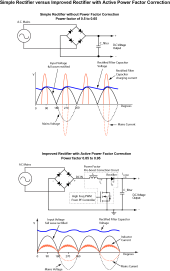Hi,
I have two no-name budget chargers which I use for my 48V DIY battery bank.
I monitor and control them with a ESP8266 microcontroller with the AC current sensor being a 15A current transformer clipped to the main house spur at the fusebox.
(CT is https://amazon.co.uk/gp/product/B089FMWH8F, interface to ESP8266 A/D input is https://www.ebay.co.uk/itm/133077015640)
All worked well until I relocated the chargers to a location that happens to be much closer to the fusebox as the wiring runs.
Now my current readings are fluctuating by +/-25% when the chargers are on.
I've tried a commercial EMI filter that does not help much, but running the chargers through a 10M coiled extensions lead fixes the fluctuations.
(Commercial filter is https://amazon.co.uk/dp/B07TZJY5M2)
Any ideas please?
I have two no-name budget chargers which I use for my 48V DIY battery bank.
I monitor and control them with a ESP8266 microcontroller with the AC current sensor being a 15A current transformer clipped to the main house spur at the fusebox.
(CT is https://amazon.co.uk/gp/product/B089FMWH8F, interface to ESP8266 A/D input is https://www.ebay.co.uk/itm/133077015640)
All worked well until I relocated the chargers to a location that happens to be much closer to the fusebox as the wiring runs.
Now my current readings are fluctuating by +/-25% when the chargers are on.
I've tried a commercial EMI filter that does not help much, but running the chargers through a 10M coiled extensions lead fixes the fluctuations.
(Commercial filter is https://amazon.co.uk/dp/B07TZJY5M2)
Any ideas please?
Last edited:



